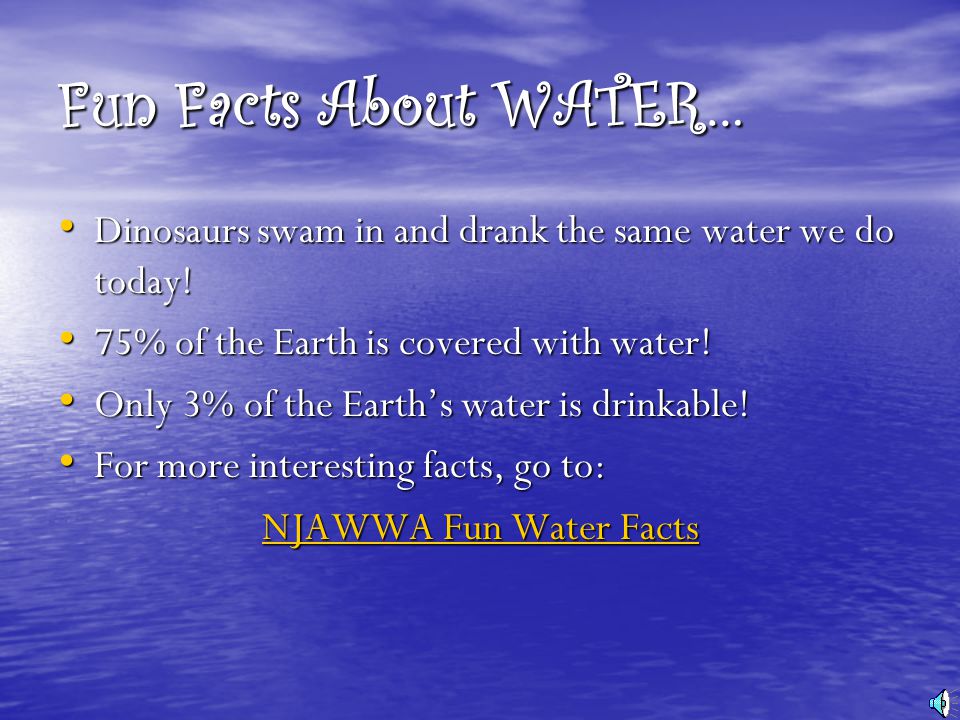Water Cycle Facts
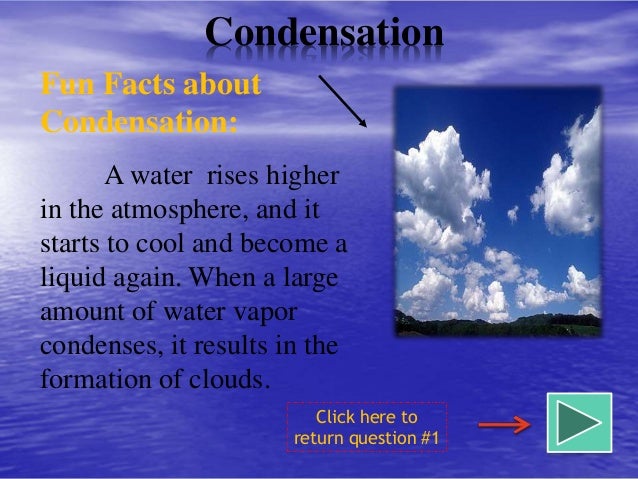
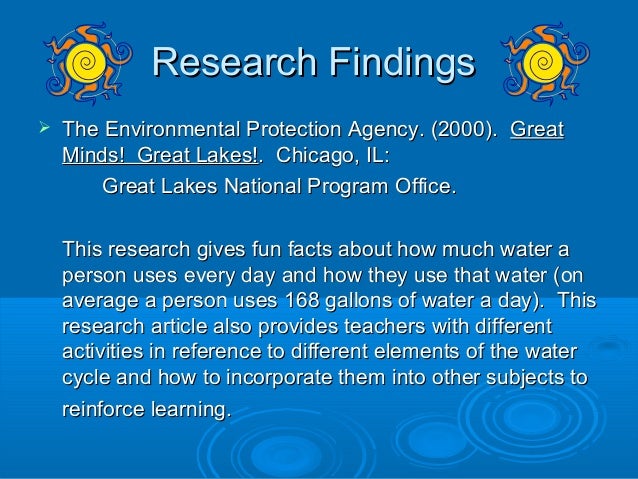
How can the answer be improved?
The Water Cycle. Enjoy learning about the water cycle for s. Understand how the water cycle works with our facts that help explain the different processes in a way that’s easy to follow. Follow the diagram and learn about evaporation, condensation, precipitation and more.
The water in your glass may have fallen from the sky as rain just last week, but the water itself has been around pretty much as long as the earth has! When the first fish crawled out of the ocean onto the land, your glass of water was part of that ocean.
Water on earth is constantly in motion, in what is called the natural water cycle. This water cycle is also referred to as the hydrologic cycle, or H2O cycle. As most ren learn in college, water in motion takes on three different forms within the cycle—solid, liquid, and gas.
The water cycle, also known as the hydrological cycle or the hydrologic cycle, describes the continuous movement of water on, above and below the surface of the Earth. The mass of water on Earth remains fairly constant over time but the partitioning of the water into the major reservoirs of ice,
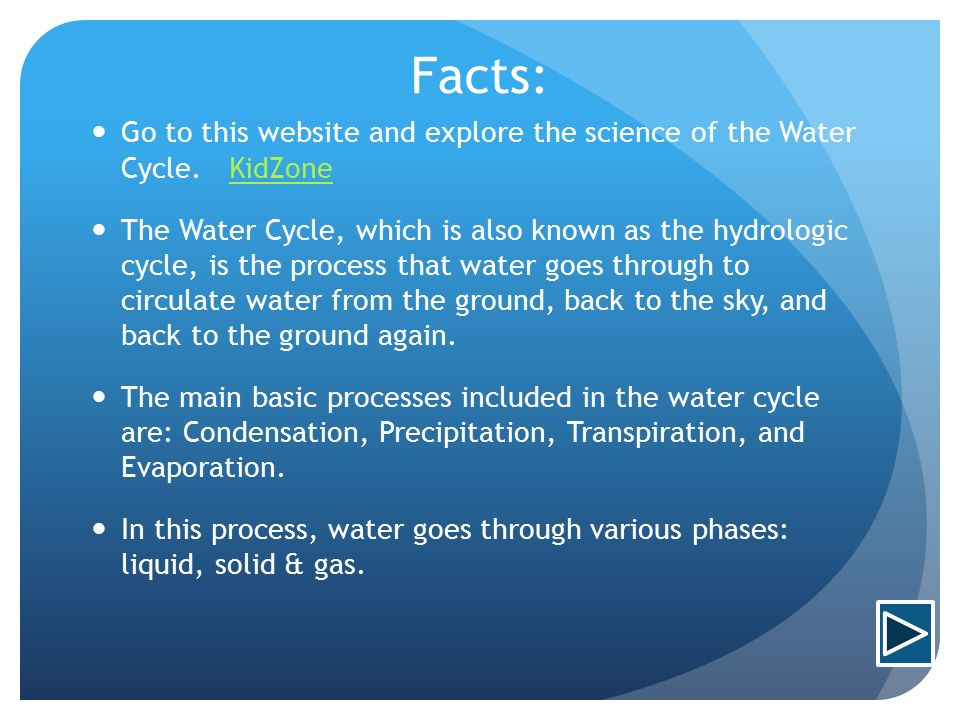
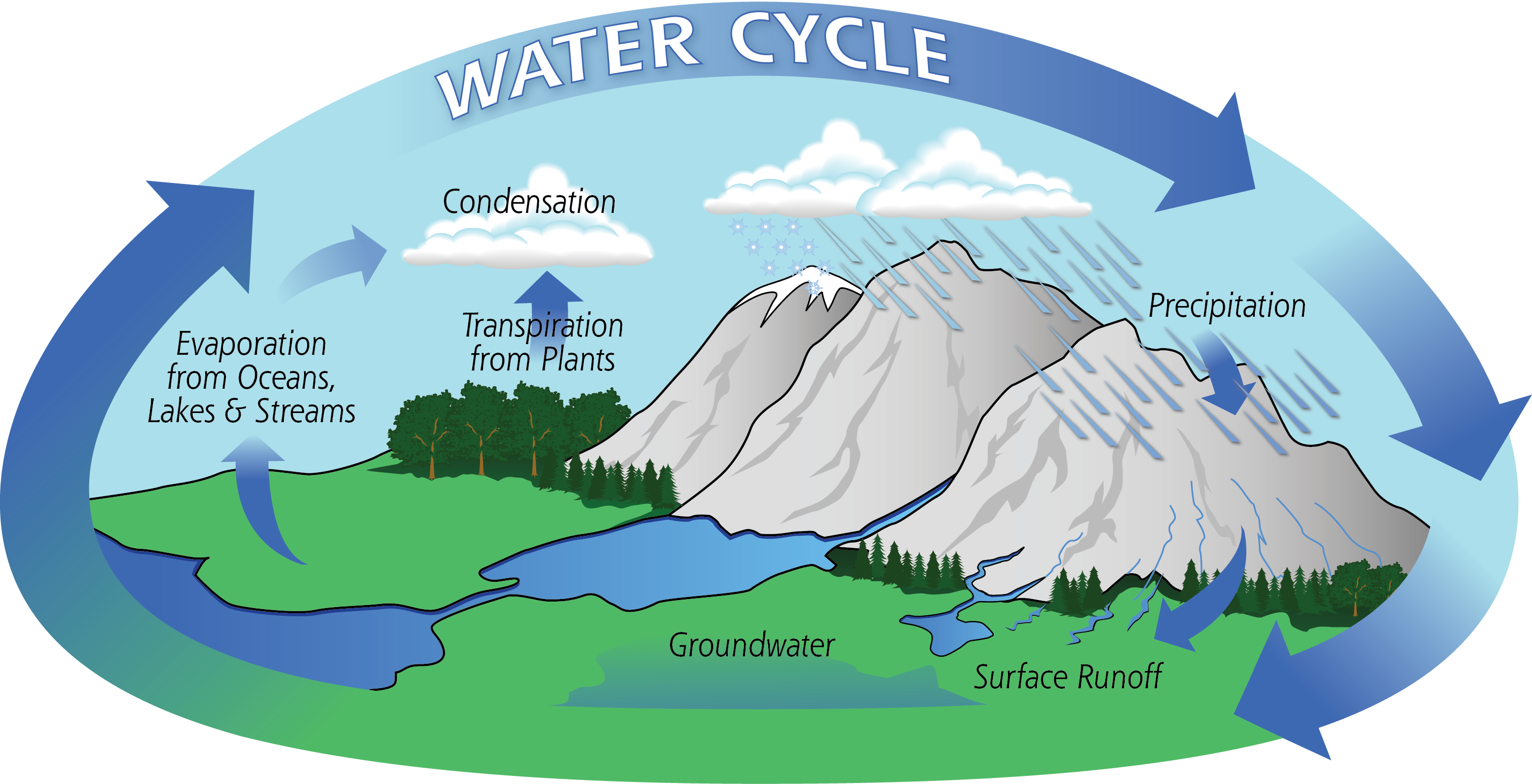
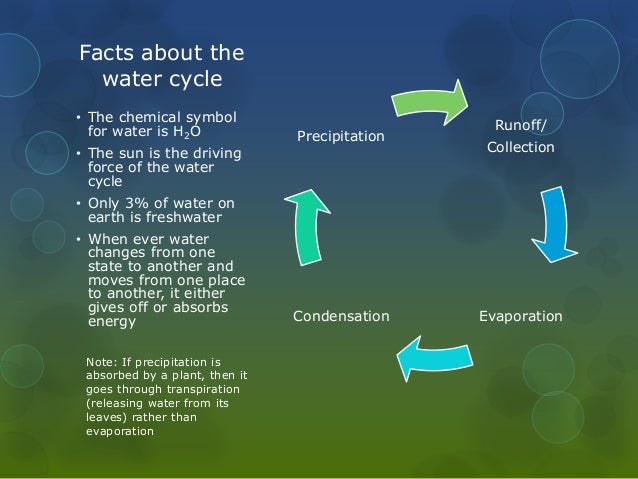
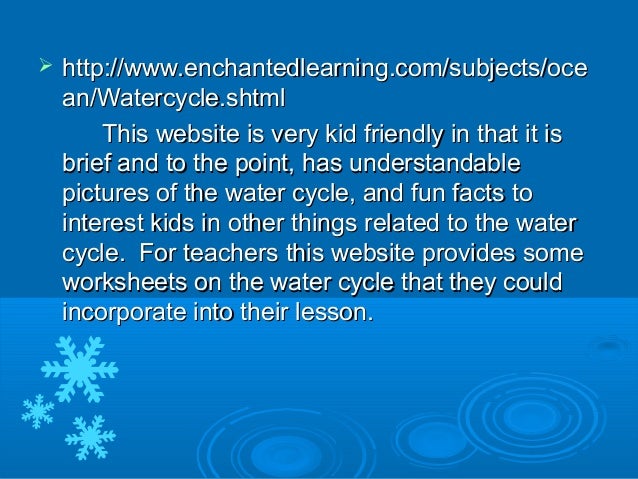
The world’s water moves between lakes, rivers, oceans, the atmosphere and the land in an ongoing cycle called – you guessed it! – the water cycle. As it goes through this continuous system, it can be a liquid (water), a gas (vapour) or a solid (ice).

Fun Earth Science Facts for s on the Water Cycle – The Condensation Process of the Water Cycle image Fun Facts about the Water Cycle for s The sun turns water on the Earth into a vapor.
Water Cycle Facts – Facts about the Water Cycle Summary. Water cycle facts tell us all our water is recycled and some of it can be very old! In fact, we could be washing in and drinking, the water that dinosaurs used millions of years ago. Of all the water on earth, only 1% of it is suitable for human use.
Interesting Water Cycle Facts: Water is a resource that cannot be created by man. The sun is the driving force of the water cycle. Whenever water changes from one state to another and moves from one place to another, it either gives off energy or absorbs energy.
